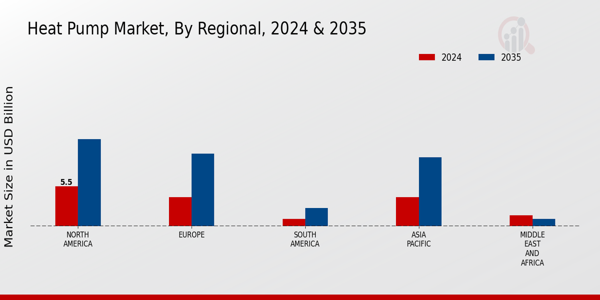Heat Pump Market Summary
As per Market Research Future Analysis, the Global Heat Pump Market is experiencing significant growth, driven by increasing energy efficiency initiatives and the adoption of renewable energy sources. The market was valued at USD 15.99 Billion in 2025 and is projected to reach USD 254.62 Billion by 2035, with a CAGR of 8.73% from 2025 to 2035. Key drivers include government regulations aimed at reducing greenhouse gas emissions and rising consumer awareness of environmental sustainability. The market is characterized by a strong demand for energy-efficient heating and cooling solutions across residential, commercial, and industrial applications.
Key Market Trends & Highlights
The Heat Pump Market is evolving with notable trends and opportunities.
- Market Size in 2024: USD 101.38 Billion; projected to grow to USD 35 Billion by 2035.
- Air Source Heat Pumps valued at USD 7.5 Billion in 2024; expected to reach USD 254.62 Billion by 2035.
- Government incentives and subsidies are enhancing market growth, with tax credits covering up to 26% of installation costs.
- North America leads the market with a valuation of USD 5.0 Billion in 2024, projected to reach USD 254.62 Billion by 2035.
Market Size & Forecast
| 2024 Market Size | USD 101.38 Billion |
| 2035 Market Size | USD 254.62 Billion |
| CAGR (2025-2035) | 8.73% |
Major Players
Trane Technologies, Fujitsu General, Aermec, Rheem Manufacturing Company, Bosch Thermotechnology, Hitachi Appliances, Johnson Controls, Gree Electric Appliances, Stiebel Eltron, Panasonic Corporation, Daikin Industries, LG Electronics, NIBE Industrier, Mitsubishi Electric, Carrier.



















Leave a Comment